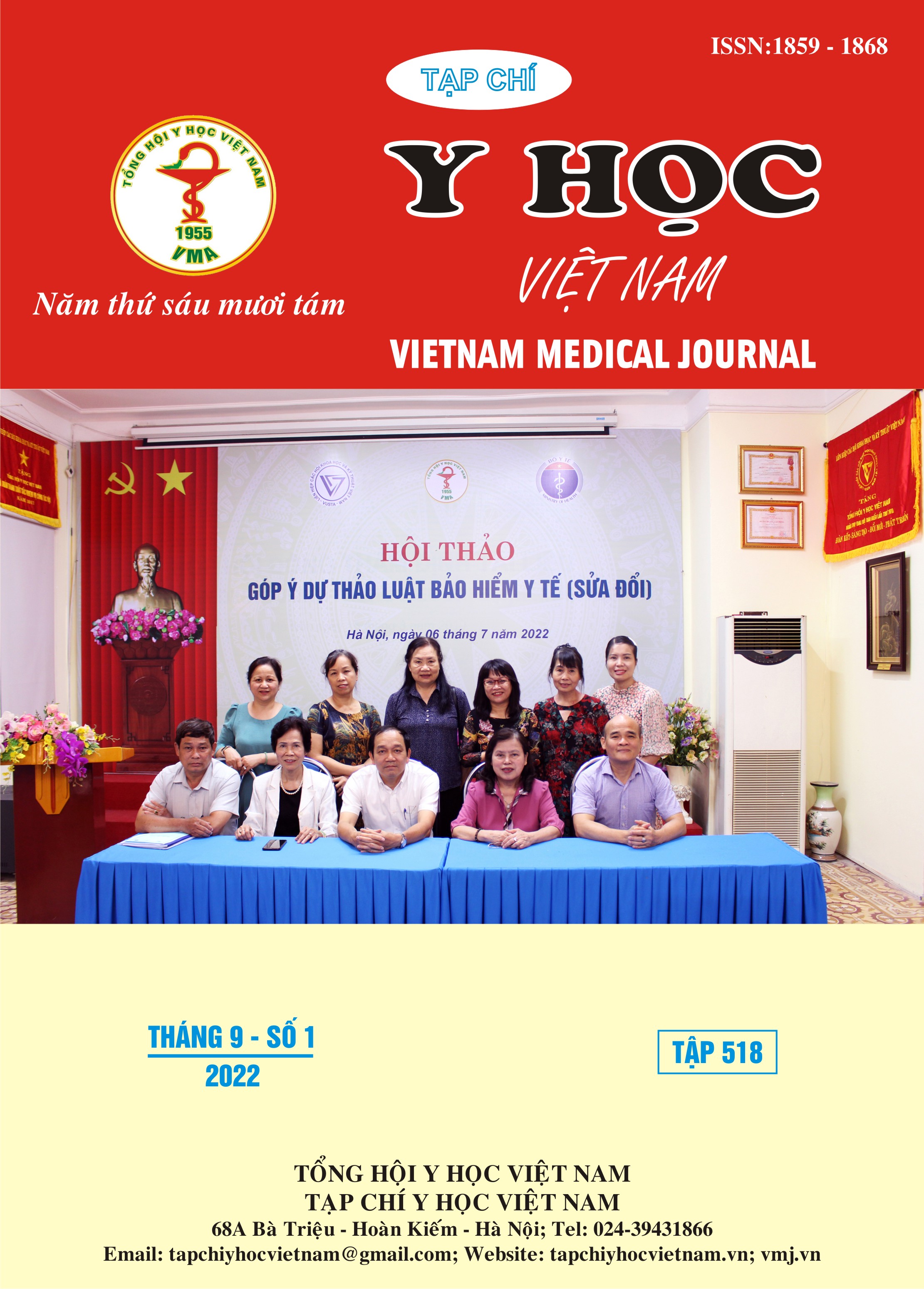SARS-COV-2 EXPOSURE CHARACTERISTICS OF HEALTHCARE WORKERS AT THE FRONTLINE HOSPITAL IN 2020
Main Article Content
Abstract
From October to December 2020, a cross-sectional study was conducted to describe the characteristics of SARS-COV-2 exposure among healthcare workers (HCWs) at frontline hospitals in Ho Chi Minh City (HCMC): Hospital for Tropical Diseases, University Medical Center Ho Chi Minh City, and Trung Vuong Hospital. Research data was collected on 204 HCWs using self-administered questionnaires. The study's results revealed that HCWs had to have initial contact (screening and emergency areas) with patients in an air-conditioned enclosed space with a high rate (76.6%). In the respiratory, the infectious and the isolation ward, HCWs had to be exposed to a large number of patients in higher-risk work environments r=0.41 (p=0.01); r=0.58 (p<0.05) and r=0.51 (p<0.05), respectively. In infectious and isolation wards, HCWs with underlying medical conditions were likely to be exposed to a larger number of patients with r=0.66 (p=0.01) and r=0.51 (p<0.001), respectively. The findings suggest the need for strategies to improve HCWs' protection in patient care settings.
Article Details
Keywords
SARS-CoV-2, COVID-19, COVID-19 exposure, healthcare workers, frontline hospital
References
2. Schwartz, K.L., et al., Healthcare Worker COVID-19 Cases in Ontario, Canada: A Cross-sectional Study. 2020.
3. Wang, J., M. Zhou, and F. Liu, Reasons for healthcare workers becoming infected with novel coronavirus disease 2019 (COVID-19) in China. J Hosp infect, 2020. 105(1).
4. Bộ Y tế, Quyết định về việc ban hành hướng dẫn chẩn đoán và điều trị Covid-19 do chủng vi rút Corona mới (SARS-COV-2). 2020.
5. Lu, J., et al., COVID-19 outbreak associated with air conditioning in restaurant, Guangzhou, China, 2020. Emerging infectious diseases, 2020. 26(7): p. 1628.
6. Nguyen, L.H., et al., Risk of COVID-19 among front-line health-care workers and the general community: a prospective cohort study. The Lancet Public Health, 2020. 5(9): p. e475-e483.
7. Barrett, E.S., et al., Prevalence of SARS-CoV-2 infection in previously undiagnosed health care workers in New Jersey, at the onset of the US COVID-19 pandemic. BMC infectious diseases, 2020. 20(1): p. 1-10.
8. Eyre, D.W., et al., Differential occupational risks to healthcare workers from SARS-CoV-2 observed during a prospective observational study. elife, 2020. 9: p. e60675.


